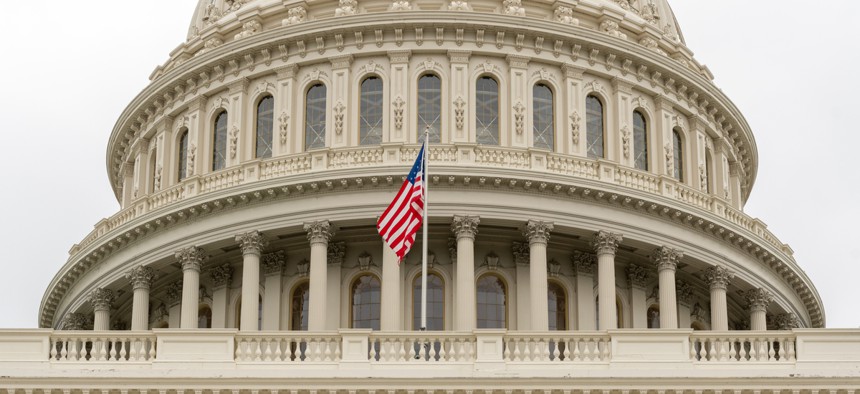A Bid to Restore and Update the Long-Dormant Intergovernmental Commission

Shutterstock/LLoughran

Connecting state and local government leaders
The bipartisan House proposal emerged out of a special intergovernmental affairs task force that met over the past two years.
A long-dormant commission designed to foster cooperation between state and local governments and federal policy makers would be revived and reworked under a proposal that a bipartisan duo of U.S. House lawmakers put forward this week.
U.S. Reps. Gerry Connolly, a Virginia Democrat, and Rob Bishop, a Utah Republican, introduced a bill that would, as they put it, “reconstitute and reform” the U.S. Advisory Commission on Intergovernmental Relations, which went dark in the mid-1990s.
From June 2017 through late last year, the two lawmakers led a special panel of about a dozen House members known as the Speaker’s Task Force on Intergovernmental Affairs, holding a series of hearings on the topic featuring experts on federalism and others.
Bishop chaired the task force and Connolly was the top Democrat. They characterized the new legislation as a product of that effort.
“Only with earned trust and open channels of communication can all governments in the United States truly work together to reduce overlap and actually do the business of improving people’s lives,” said Connolly, who has unsuccessfully proposed similar legislation in the past.
Bishop said he was pleased to work with Connolly on the bill. “The solutions to our nation's problems are found in the creativity of state, local, and tribal governments, all of whom are closer to the people than Washington bureaucrats,” he said.
The Advisory Commission on Intergovernmental Relations was active between 1959 and 1996.
It was fashioned as a bipartisan group with 26 members who could study problems, programs and other intergovernmental matters. Members included representatives of the White House, congressional lawmakers, governors, state legislators, mayors and county officials.
The new body proposed in the bill would simply be dubbed the Commission on Intergovernmental Relations. It would consist of 31 members.
The president would appoint six of them—three from the executive branch and three private citizens. The speaker of the House and Senate majority leader would each get to appoint three lawmakers from their respective chambers of Congress.
Additionally, the National Governors Association, National Conference of State Legislatures and National Association of Counties would each submit a slate of at least eight possible members. The president would select four members to serve on the commission from each group’s lists.
The National League of Cities and U.S. Conference of Mayors would jointly submit a list of at least eight mayors to serve on the panel from which the president would appoint four members.
There’d be a similar process for the president to select one member from the National Association of Towns and Townships and two representing American Indian tribes.
The bill also sets guidelines to limit how many commission members could be from one political party or one state, and that also call for members to hail from both large and small jurisdictions.
What would the commission do?
The bill says it would act as a forum for discussing common problems across levels of government, options for improving federal grant programs, regulations and tax policies.
It also emphasizes that providing state, local and tribal governments with a pathway toward greater flexibility and discretion in implementing federal policies and programs is a priority.
The group would have a chance to offer advice to the executive branch and Congress on improving operations of federal agencies. And it would “identify the intergovernmental impacts” of U.S. Supreme Court rulings on state, tribal and local governments.
Congressional lawmakers, under the terms of the bill, would have to hold hearings on recommendations from the commission within 90 days of receiving an annual report the group would file with Congress and the White House.
There’s also a section in the legislation that directs executive branch agencies and departments to furnish the commission with information upon receiving requests from the panel’s chairman or vice chairman.
Initially the president would designate the chairman and vice chairman. But the commission could subsequently establish a process for electing people to those positions.
The governors association, association of counties, league of cities, International City/County Management Association, conference of state legislatures, Council of State Governments, and the conference of mayors have all endorsed the legislation.
Bill Lucia is a Senior Reporter at Route Fifty and is based in Olympia, Washington.
NEXT STORY: Recalling Local Officials Is An ‘Intense, Scrappy Challenge’





